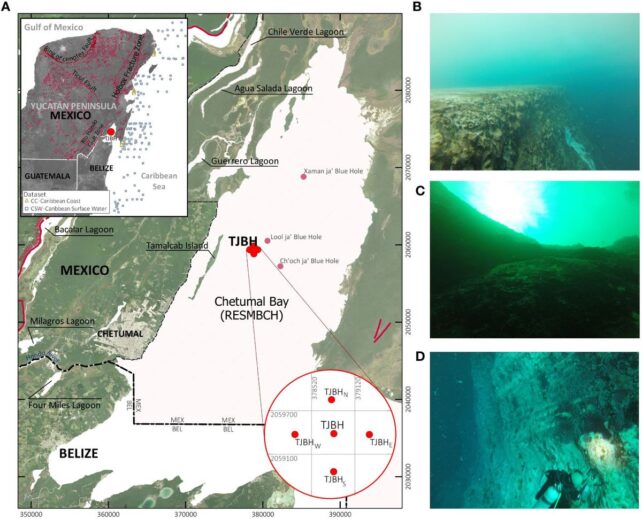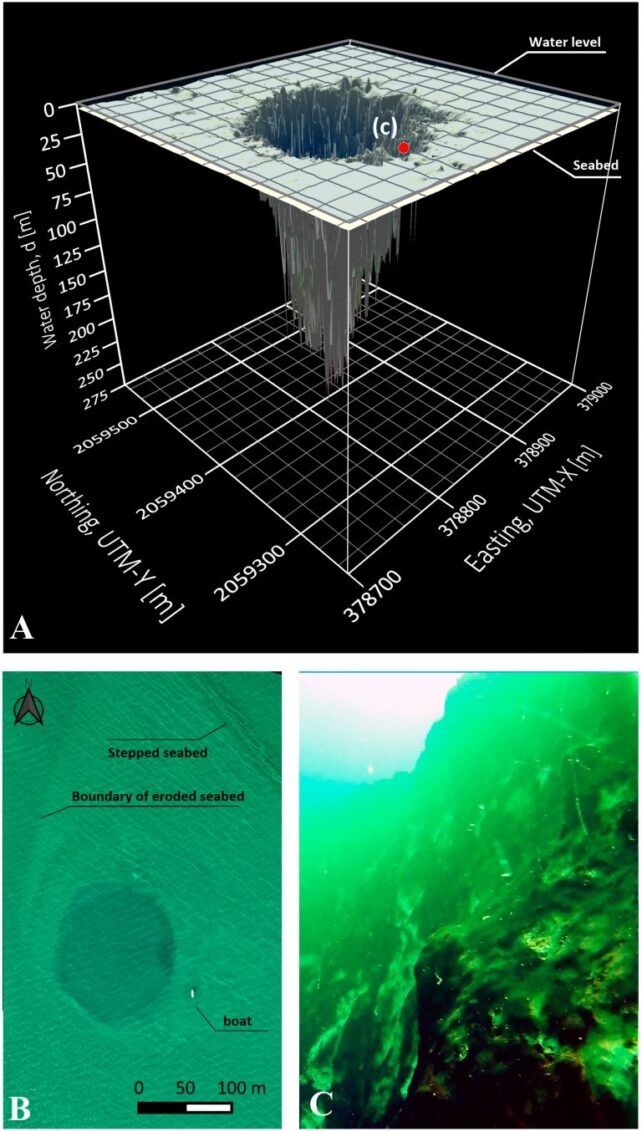
Dinosaur Killing Gaping Hole 'Has No End'... Yet.
Share
The ocean floor holds many secrets, and a giant sinkhole off the coast of Mexico is no exception. The Taam Ja' blue hole is now confirmed as the world's deepest, plunging further into the abyss than any other known underwater cave.
A Gaping Abyss
From the surface, the 150-metre wide Taam Ja' appears like a giant eye, its cerulean depths reminiscent of an iris. Located in a bay on Mexico's Yucatan Peninsula, bordering Belize, this formidable sinkhole was first documented in 2023. Initial sonar surveys suggested it was the world's second-largest blue hole.
However, the true marvel of Taam Ja' lies in its unfathomable depths. Even sound, which travels well underwater, can't seem to reach the bottom. High-frequency sonar waves disappear after penetrating just 274 metres.
One potential culprit is a pycnocline – a layer of water with a different density that can bend and scatter acoustic signals.
The Quest to Reach the Bottom

Determined to solve the mystery of Taam Ja's true depth, researchers from El Colegio de la Frontera Sur (ECOSUR), a Mexican scientific research institute, anchored a vessel in the centre of the sinkhole in December 2023. They lowered a 500-metre cable with an instrument measuring water pressure, temperature, and conductivity. Even at the full length of the cable, the device failed to touch down.
The limestone and gypsum walls of the blue hole slope inwards, meaning the instrument reached a depth of 420 metres before encountering a wall. The true bottom, as the ECOSUR researchers write, "remains elusive."
A Gateway to the Deep?

Future expeditions using underwater robots might be able to reach greater depths. Interestingly, as the instrument reached the 400-metre mark, real-time data showed a sudden change in water conditions, aligning with those of the Caribbean Sea. This suggests the possibility of a hidden tunnel connecting the blue hole to the wider ocean.
A Region of Geological Wonders
The Yucatan Peninsula is renowned for its unique geology, riddled with over 10,000 freshwater-filled sinkholes (cenotes) and a vast labyrinth of subterranean caves and underwater rivers. These natural wonders have yielded incredible archaeological and biological discoveries, fuelled by our insatiable curiosity.
The cluster of cenotes surrounding the Chicxulub crater, the impact site believed to have wiped out the dinosaurs, likely played a role in shaping the region's unusual geology. This cataclysmic event may have indirectly created a niche for new ecosystems to flourish, despite the low-oxygen and dark environments these cenotes present.
A Potential Hotspot for Biodiversity
Similar to cenotes, the Taam Ja' blue hole could harbour a unique ecosystem. Marine biologists are increasingly exploring blue holes worldwide to understand the life forms that thrive in these unique environments. New species have already been discovered in some blue holes.
The ECOSUR research team suggests that "within the depths of [Taam Ja'] could also lie a biodiversity to be explored and linked to physicochemical and geomorphological processes, forming a unique biotope."
The researchers are eager to delve deeper into this captivating underwater mystery. The secrets of the Taam Ja' blue hole await, promising to reshape our understanding of the ocean's depths and the life it holds.
You’ve come this far…
Why not venture a little further into A.S.S. - our exclusive Australian Space Society.
And keep thrusting Australia into the deep unknown…
#Space_Aus




